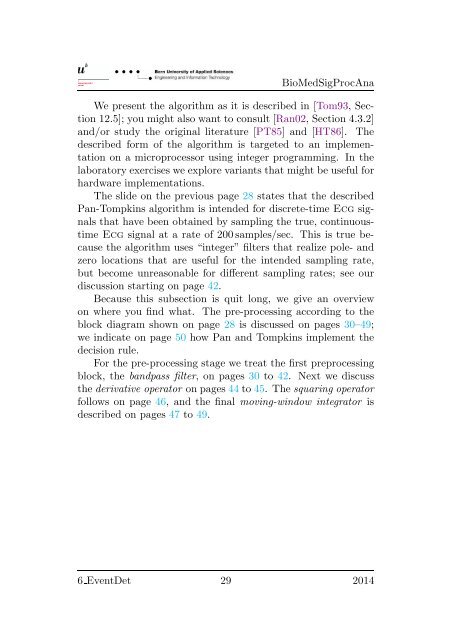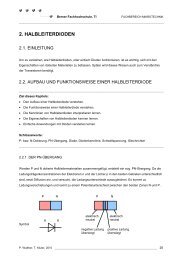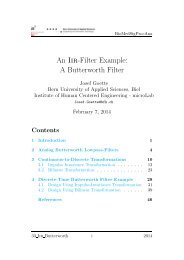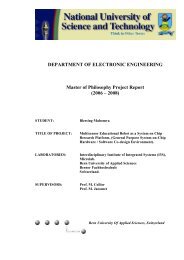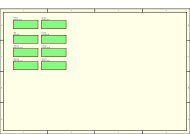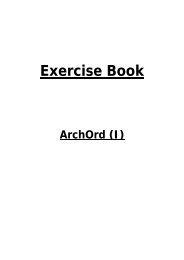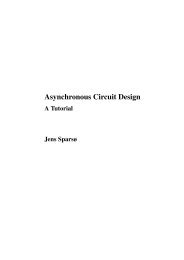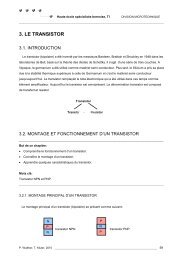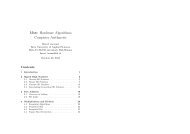Event Detection: Qrs-Complexes in Ecg Signals - microLab
Event Detection: Qrs-Complexes in Ecg Signals - microLab
Event Detection: Qrs-Complexes in Ecg Signals - microLab
- No tags were found...
You also want an ePaper? Increase the reach of your titles
YUMPU automatically turns print PDFs into web optimized ePapers that Google loves.
BioMedSigProcAnaWe present the algorithm as it is described <strong>in</strong> [Tom93, Section12.5]; you might also want to consult [Ran02, Section 4.3.2]and/or study the orig<strong>in</strong>al literature [PT85] and [HT86]. Thedescribed form of the algorithm is targeted to an implementationon a microprocessor us<strong>in</strong>g <strong>in</strong>teger programm<strong>in</strong>g. In thelaboratory exercises we explore variants that might be useful forhardware implementations.The slide on the previous page 28 states that the describedPan-Tompk<strong>in</strong>s algorithm is <strong>in</strong>tended for discrete-time <strong>Ecg</strong> signalsthat have been obta<strong>in</strong>ed by sampl<strong>in</strong>g the true, cont<strong>in</strong>uoustime<strong>Ecg</strong> signal at a rate of 200 samples/sec. This is true becausethe algorithm uses “<strong>in</strong>teger” filters that realize pole- andzero locations that are useful for the <strong>in</strong>tended sampl<strong>in</strong>g rate,but become unreasonable for different sampl<strong>in</strong>g rates; see ourdiscussion start<strong>in</strong>g on page 42.Because this subsection is quit long, we give an overviewon where you f<strong>in</strong>d what. The pre-process<strong>in</strong>g accord<strong>in</strong>g to theblock diagram shown on page 28 is discussed on pages 30–49;we <strong>in</strong>dicate on page 50 how Pan and Tompk<strong>in</strong>s implement thedecision rule.For the pre-process<strong>in</strong>g stage we treat the first preprocess<strong>in</strong>gblock, the bandpass filter, on pages 30 to 42. Next we discussthe derivative operator on pages 44 to 45. The squar<strong>in</strong>g operatorfollows on page 46, and the f<strong>in</strong>al mov<strong>in</strong>g-w<strong>in</strong>dow <strong>in</strong>tegrator isdescribed on pages 47 to 49.6 <strong>Event</strong>Det 29 2014


